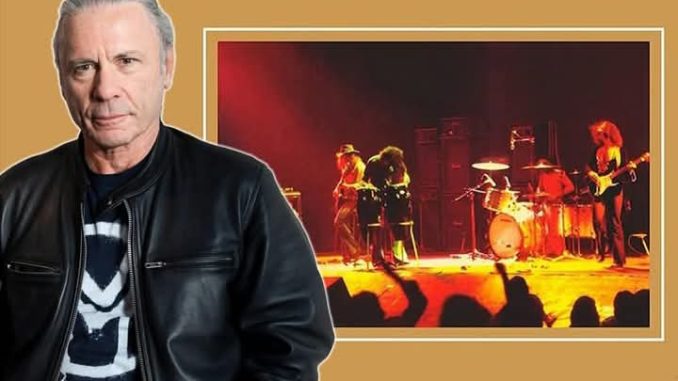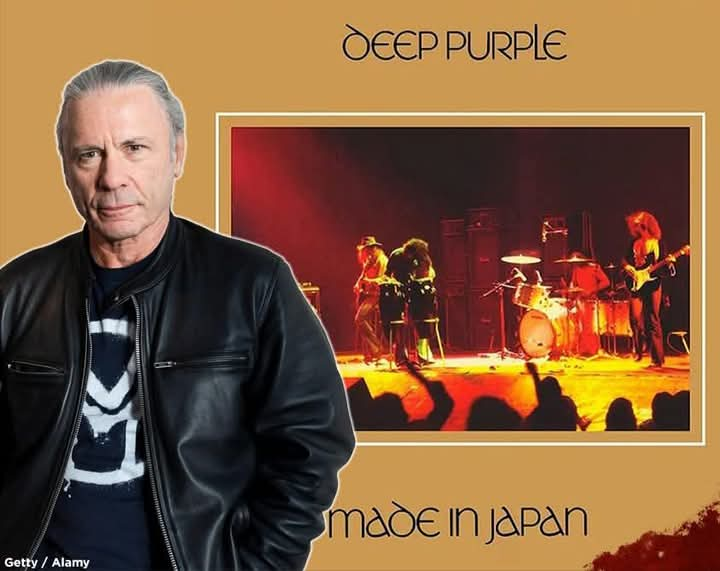
When Bruce Dickinson, the legendary voice of Iron Maiden, declares something the best live rock album ever, it’s worth paying attention. Among countless iconic live recordings, from Live at Leeds to Frampton Comes Alive!, Dickinson’s praise for Deep Purple’s Made in Japan stands as both a tribute and a declaration of musical truth. To him, the 1972 double album captures not only a band at its peak but the very essence of what rock ‘n’ roll is supposed to sound and feel like.

A Live Album Like No Other
Recorded over three nights in Osaka and Tokyo in August 1972, Made in Japan was initially intended as a Japan-only release. Deep Purple’s “Mark II” lineup, Ian Gillan, Ritchie Blackmore, Roger Glover, Jon Lord, and Ian Paice, was riding high on the success of Machine Head, and their Japanese label, Warner Bros., wanted to immortalize their shows for local fans. What emerged, however, was far greater than anyone expected: a raw, thunderous, electrifying snapshot of a band in complete command of its power.
Unlike most live albums of its time, Made in Japan featured no overdubs, no studio polish, just five musicians pushing each other to the limits of improvisation and intensity. “It’s not just a live record,” Bruce Dickinson once said in interviews, “it’s a performance captured. You can hear the danger, the risk, and the joy.”
Why Bruce Dickinson Thinks It’s The Best
Dickinson, who has never hidden his admiration for Deep Purple, often credits the band as a formative influence on his own career. In particular, Ian Gillan’s combination of vocal athleticism and dramatic flair left an indelible mark on the young singer who would later front Iron Maiden.
To Dickinson, Made in Japan stands above all others for several reasons:
- Authenticity Over Perfection: The album feels alive. There are no safety nets, no studio magic. The musicians stretch songs like “Child in Time” and “Space Truckin’” into sprawling, unpredictable jams, something few modern bands dare to attempt.
- Performance as Combat – Dickinson has described the album as “a duel between giants.” Ritchie Blackmore’s guitar and Jon Lord’s organ battle for dominance, while Gillan screams, Paice thunders, and Glover anchors the chaos. It’s a gladiatorial contest of sound.
- The Sonic Standard – Despite its age, the recording’s energy and clarity remain astonishing. Dickinson often contrasts it with overly processed live albums of later decades: “This is what a rock band should sound like when they’re on fire.”
- Influence on Generations – For metal vocalists and musicians, Made in Japan was a blueprint. The interplay, the improvisation, and the sheer command of dynamics would later shape everything from Iron Maiden’s live ethos to Metallica’s concert approach.
A Band At The Edge Of Perfection
Deep Purple in 1972 was a force of nature. “Highway Star” explodes with precision and fury, “Smoke on the Water” roars with mythic weight, and “The Mule” showcases Ian Paice’s jaw-dropping drumming. But it’s “Child in Time” that often leaves listeners stunned — Gillan’s shrieks soaring over Blackmore’s haunting guitar lines in a display of pure emotion.
As Dickinson has noted, “There’s a point in that song where the whole thing just levitates. That’s what great live music does, it takes you somewhere else entirely.”
Legacy Beyond Time
More than 50 years later, Made in Japan remains a benchmark for live performance. Critics continue to hail it as one of the most genuine depictions of rock energy ever captured on tape. Bruce Dickinson’s endorsement isn’t just nostalgia; it’s an acknowledgment of artistic bravery, of a band that walked onstage with no safety net and created something eternal.
As Dickinson put it during one of his spoken-word tours:
“If someone asks me what the greatest live rock album ever made is, I don’t even have to think. Made in Japan. That’s the sound of a band truly alive.”
And coming from the frontman of Iron Maiden, a man who knows a thing or two about transcendent live performances, that’s the highest praise imaginable.
Leave a Reply